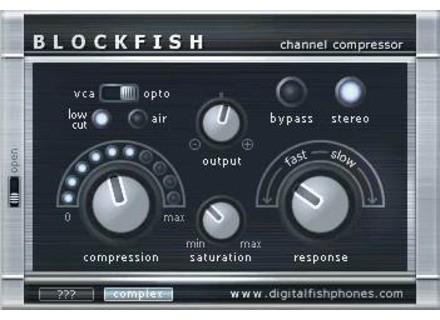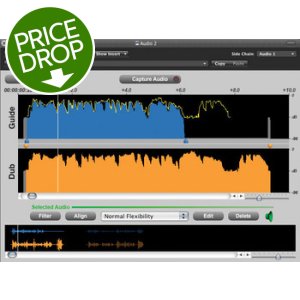Urs Saturation Classic Console
URS Saturation Classic Console Strip Pro AU VST RTAS TDM OSX INTEL. Team: XVX Date: The URS Strip Pro v2.0 update combines powerful modern features with vintage analog sound to enhance the mixing experience. All 30 Input Stages have been. URS Classic Console Strip EQ + Compressor - Native. EQ and Compressor Console Plug-in with 46 Preset Points, Easy Control-surface Mapping, and Compact Screen Design - Native - Mac/PC RTAS, AU, VST. 6-month Promotional Financing Available ‡. Via the power of Universal Audio’s UAD-2 DSP system, Thermionic Culture’s modern-day hardware classic offers UAD users all-valve saturation. The plugin also sports a dry/wet mix function that the original unit lacks.
Unique Recording Software have modelled a vast array of vintage compressors and EQs and presented the results in a single plug-in.
Stand-alone hardware channel strips became big news in the ’90s as engineers began to migrate to computer–based systems for recording and mixing. Ditching the big desks and racks of outboard effects in favour of PCs and plug-ins brought undeniable benefits: automation got more sophisticated, track counts grew, space was saved. Yet many engineers felt that something else went by the wayside in the process. Digital audio workstations might have allowed them to use hundreds of EQs and compressors on every track, but those EQs and compressors just didn’t sound as good as their analogue counterparts.
The idea behind the channel strip was to put back that missing analogue magic, but in a format that lent itself to the new digital working practices. Thus, a typical rackmounting channel strip would include a high-quality mic preamp, compressor and equaliser, in some cases taken bodily from vintage mixer channel strips. Important signals such as lead vocals could then be processed on the way in to the computer, to give them the sheen and substance that plug-ins weren’t able to supply.
Throughout this decade, plug-in manufacturers have been working hard to change the prevailing view of their products as cold, sterile or lifeless, with a good deal of success. Plug-in recreations of vintage analogue processors have become big business, and their quality has improved to the extent that companies such as Neve, API and SSL have allo wed their names to be attached to digital emulations of their classic hardware. And, perhaps inevitably, things have now come full circle, and you can buy plug-ins designed to emulate the hardware that was designed to mean you wouldn’t need to use plug-ins...
Consoling Thoughts
All of which brings us to the subject of this review, URS’s Classic Console Strip Pro. Like many other plug-ins, its raison d’être is the recreation of vintage analogue processing in a digital environment. However, Classic Console Strip Pro goes way beyond the idea of emulating any one vintage channel strip. Instead, it offers a modular design that makes it one of the most comprehensive and versatile processing plug-ins on the market. Classic Console Strip Pro is available in TDM and all major native formats on Mac and PC, and is authorised to an iLok key. Installation is straightforward, although it’s slightly frustrating that you need to download and run separate installers for every version you want to install (VST, RTAS, TDM and so on).
The Classic Console Strip Pro window is divided into a number of sections. Some of these can be re-ordered using the Pre and Post switches, with the current order displayed in the Signal Flow section at the left. This also provides a handy way of bypassing individual sections, which can lighten CPU load. Presets saved at the host or plug-in level capture the entire status of the plug-in, but there are also drop-down menus in the individual sections. These allow you to change the model or algorithm that section is using, and in the case of the compressor section, bring up appropriate preset time constants and other settings for that model.
The one fixed element in the signal path is the modelled input stage, which, as you’d expect, is always the first thing your signal encounters. A drop-down menu provides access to a range of algorithms which model different combinations of transformer input stages, tape-head bumps, and tape machine or valve electronics. A gain control lets you choose how hard to drive this algorithm, and an Intensity slider runs from zero to 200 percent — the halfway point being the most faithful to the original hardware.
A World Of Dynamics
There are three further sections: compressor, filter and EQ. These can be arranged in any order, or the filter section can be placed in the compressor side-chain rather than in the audio path.
The filter section is the simplest, and the only one that does not provide a choice of algorithms. Instead, you get low- and high-pass filters with a fixed slope, both with cutoff fully variable from 20Hz to 20kHz. If you put it in the audio path, it does a good job of cleaning up low-end rumbles or high-frequency noise, but unlike the full-blown EQ section, its sound is transparent rather than characterful. In use, it seemed to me most valuable switched into the compressor side-chain; a gentle high-pass helps stop the compressor pumping on low-frequency sounds like kick drums, while a more aggressive setting can be used to make the compressor act as a de-esser.
The compressor section seems to be partially derived from URS’s existing 1970 and 1980 Compressor plug-ins, but they have extended their remit to cover a huge range of vintage units. URS told me that they don’t use convolution, and their plug-ins’ relatively low DSP or CPU loads bear this out; but whatever technique they are using seems to involve creating several different algorithms for each piece of hardware, at different ratio settings. So, for instance, there are four ‘Stress’ algorithms (based on the Empirical Labs Distressor?), which default to ratio settings of 3:1, 6:1, 10:1 and 20:1 respectively, and other hardware units are similarly represented four or five times each.
Many of the hardware units emulated here had fixed, stepped or otherwise restricted time constants, so choosing a compression algorithm from the drop–down list also sets these to appropriate values, along with the separate Knee dial. However, the plug-in’s interface is the same whatever model you select, and all the controls remain active over their full range; so even if, for instance, you select the ‘Stress 3’ algorithm, there’s nothing to stop you moving the Ratio dial to 20:1 or even higher. Likewise, you can happily use super-fast attack times on models of legendarily slow compressors if you want to. This may displease some vintage obsessives, but as URS’s Bobby Nathan points out, the ‘original’ feature set is not sacred; it was common for studios to modify classic hardware to maximise its flexibility, and URS are merely extending the same principle here.
One thing that initially confused me about Classic Console Strip Pro’s compressor section is that calling up a new compressor algorithm also resets the Threshold and Gain Makeup controls. This means that if you use the Threshold control to manage the amount of gain reduction, it’s hard to perform A/B comparisons between different compressor algorithms. However, there is logic behind this approach; each compressor preset has been designed to deliver the same amount of gain reduction, so if you want to A/B them, the easiest way is to leave these controls at the default settings and turn up the plug-in’s input gain control until you get the desired amount of compression. When you then switch to a new compressor preset, the output level should remain unchanged, even if that preset uses radically different ratio and time-constant settings. The idea, apparently, is that this provides a good way of learning the differences between the different compressor models; once the user is more familiar with them, he or she will be more confident about moving away from the presets and making free with the Threshold and other controls. It’s an interesting approach, but it takes some getting used to.
Urs Saturation Classic Console Boats For Sale
By default, an appropriate input stage model is selected automatically whenever you choose a compressor model, but during the course of this review URS released an updated version 1.1 of the plug-in that makes it possible to turn this linking off. This version also introduced authentic auto-release settings for seven of the compressor models.
Strike Up The Bands
The right-hand half of the Classic Console Strip Pro window is devoted to the four–band EQ. Each band allows you to select one of five algorithms; these, again, mimic classic hardware, but have been given dates instead of names. (I’m not sure why URS have to be quite so coy about what they are emulating!) Few of the original hardware units being mimicked here had bandwidth controls, while most had only a few stepped frequency settings (and in the case of the ‘1951’ EQ, no boost circuitry at all), but as with the compression section, the plug-in controls remain freely variable regardless. The Q setting ranges from 3.0 to 0.25, cut and boost run to 15dB in either direction, and the frequency range covers 1.5kHz to 20kHz (HF band), 220Hz to 7kHz (the two mid-frequency bands) and 20 to 500 Hz at the bottom end. The two outer bands can be switched between shelving and peaking operation.
Super Strip
I’ve been a long-term user of URS’s Classic Console Compressors bundle, and especially their A- and N-series EQ plug-ins. In terms of sound quality, the compression and EQ sections of the Classic Console Strip Pro plug-in easily match those earlier products, as you’d expect. In terms of versatility, moreover, they go way beyond URS’s previous efforts, although it’s mildly annoying that the two mid EQ bands can’t be set lower than 220Hz. The compressor algorithms augment the slightly generic ‘vintage’ feel of the Classic Console Compressors models with a huge range of distinctive and highly usable hardware emulations, including valve, optical, FET and VCA designs, as well as tape compression. I can’t think of any other plug-in that models so many different input stages, although Cranesong’s Phoenix and Magix’s Analogue Modelling Suite offer good alternative takes on the idea. Now that a programme-dependent release option has been added, the only major functional improvement I’d like to see would be the addition of a separate, dedicated de-esser. You can turn the compressor into a competent sibilant remover easily enough by filtering the side-chain, but of course doing so means you can’t also use it as a compressor. A dedicated de-essing section could also incorporate more advanced options such as split processing to compress only the offending frequencies.
From a new user’s point of view, the inevitable down side to all its flexibility is that Classic Console Strip Pro is not as immediate as URS’s individual plug-ins. Until you familiarise yourself with the quirks of the different compressor algorithms, the list is pretty daunting, and the unconventional design approach behind the compressor presets takes some getting used to. Likewise, the simplicity of something like the A-series EQ plug-in is a little lost when you start to introduce Q controls and freely variable frequency ranges. However, there’s a good selection of presets that can serve as starting points, and I imagine most users will quickly build up a library of their own.
It’s the sound that matters most, though, and if the aim is to create a truly ‘one stop’ processing shop, Classic Console Strip Pro certainly has the sonic bases covered. Whether you’re after bright, in-your-face, screwed–down ’80s rock vocals, warm ’70s folksiness, characterful ’60s colour, or whatever, you’ll find it here. It’s equally at home on other sources, such as acoustic guitar or bass, and I liked it as a mix-bus processor too; the ‘Tape 15ips’ preset, for instance, adds a subtle forwardness and bass boost that can really make a mix sound rounded and complete.
In short, then, there’s very little to dislike about Classic Console Strip Pro, but prospective buyers might need to think about how well its ‘one plug-in to rule them all’ philosophy chimes with them. One of the great benefits of mixing in the box is the ease with which you can combine different processors from different manufacturers, and personally, my instinct is often to reach for simpler, single–function EQ and dynamics plug-ins that I know inside out, even though they may not offer the same depth or versatility. What URS have set against that here is the potential to create your own custom ‘analogue’ console by inserting the same plug-in across multiple DAW tracks, and that will be a mouth-watering prospect to many. If you like the idea of a comprehensive channel processor within a single package, and you’re willing to put some time into getting to know it, you should run, not walk, to URS’s web site and download the demo of Classic Console Strip Pro.
Stripped-down Strip
Buying Classic Console Strip Pro gets you a free copy of the much more straightforward Classic Console Strip plug-in, which is also available as a separate product. When you haven’t the time or the inclination to delve into the complexities of the full Pro version, this could be very handy. It’s also designed to have a very low CPU or DSP load (not that the full version is excessive), and to map easily onto hardware controllers for hands-on adjustment.
The compressor section is based on the ‘1975 VCA’ model from the Pro version, including an emulated transformer input stage, and offers basic Threshold, Ratio and Gain Makeup controls, plus a choice of three preset time-constant settings. It can be switched pre- or post- the three-band EQ, which features an equally simple feature set. Low and high filters have switchable turnover points, and the sweepable mid can be set to Sharp or Wide Q.
The three EQ bands are taken from different hardware models, but complement one another well, and the streamlined feature set is well suited to getting good vocal sounds in a hurry. If the full Pro version is beyond your means or seems over-complex for your purposes, it’s worth looking at this plug-in (native £97.53,TDM £190.35) as a product in its own right.
Alternatives


Perhaps the most obvious alternative in terms of emulating a wide range of vintage compressors and equalisers would be Focusrite’s Liquid Mix system, although this, of course, runs on a separate DSP unit rather than as a native or TDM plug-in. You could also investigate McDSP’s extensive range of plug-ins, which likewise feature numerous presets dedicated to recreating old and new analogue gear.
Pros
Urs Saturation Classic Console Turntable
- Sounds great.
- Extremely versatile.
- Includes details such as the input stage modelling that are rarely found on competing products.
- The simpler Classic Console Strip plug-in bundled with it is very worthwhile, and efficient in terms of CPU or DSP resources.
Cons
- A deep plug-in, with some interface quirks, which takes time to explore fully.
- It would be nice to have a dedicated de-esser section.
Summary
If you like the idea of a vintage channel strip in software, there are few rivals that offer as much depth and versatility as this.
information
TDM version £669.75; native version £334.88. Prices include VAT.Unity Audio +44 (0)1440 785843.
Urs Saturation Classic Console Commands


Urs Saturation Classic Console Table
+44 (0)1440 785845.